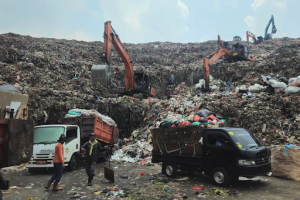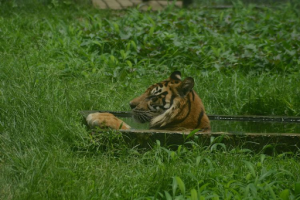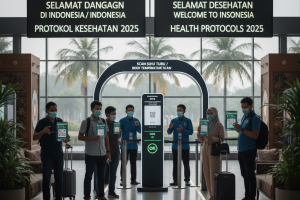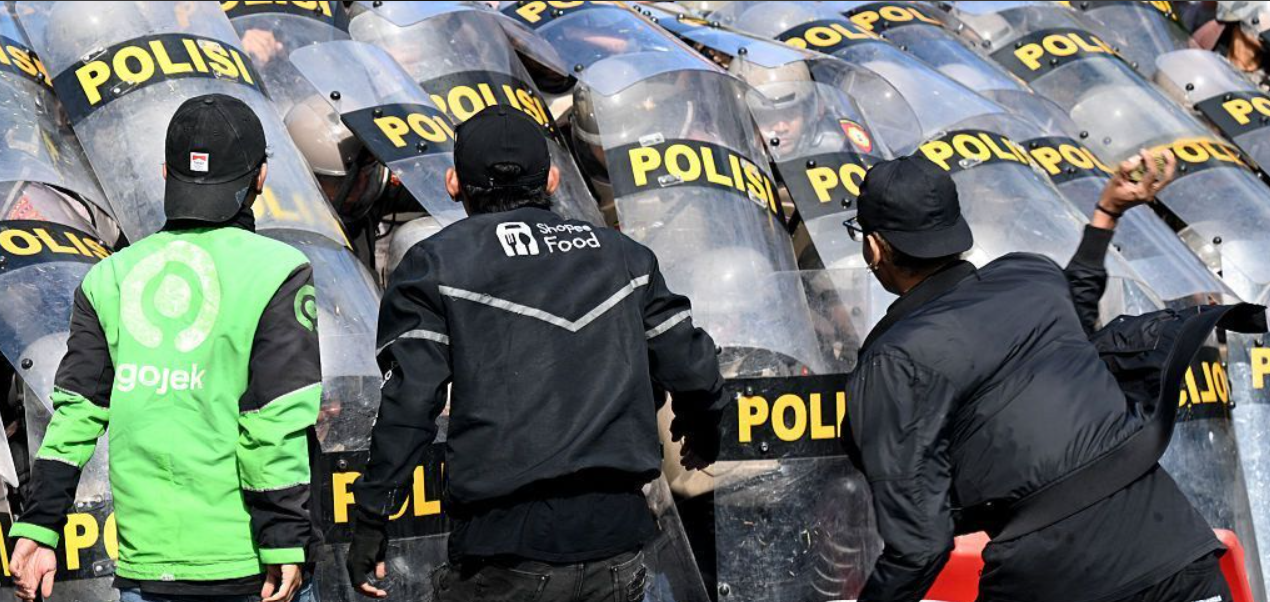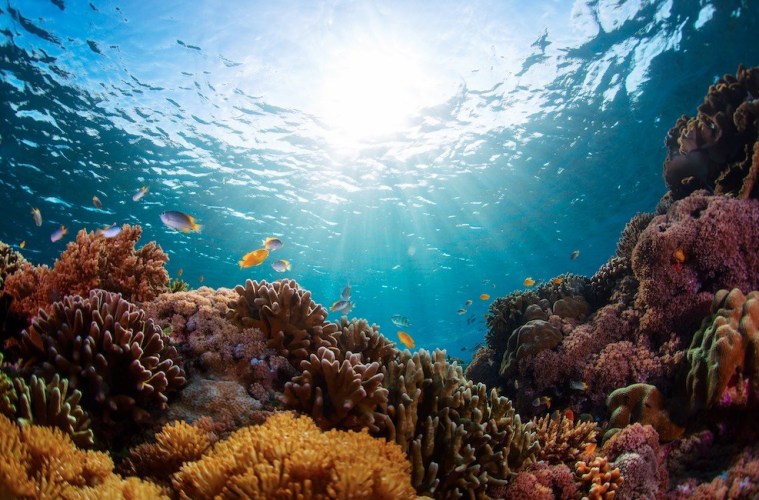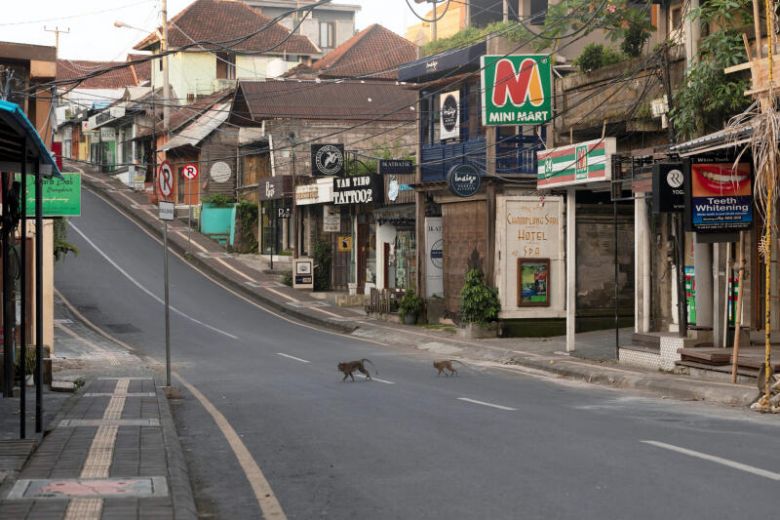Katrina Valkenburg heads south to check out the rise and rise of the Bukit, Bali’s latest land of sweeping views, a multi-million dollar pads and six star set-ups.
The very best way to get an understanding of what is happening up at the Mount is to fly over it by helicopter, which is exactly how this story begins. On a perfect Sunday afternoon in paradise, Captain Machfuld of Air Bali flew me around the cliff, pointing out all the sights and the developments.
The first thing that strikes you is how different the landscape is to the rest of the island. The Hill (meaning ‘hill’) is a non-volcanic limestone plateau and the area is pretty much non-arable during the dry season. The Dry, Arid, scrubby vegetation is quite a contrast to the lush tropical gardens most people associate with Bali, and is far more reminiscent of Ibiza or a Greek Island. The soil here lies on top of porous limestone and any rain the Hill receives, which is not very much, quickly seeps through to a very low water table.
In the late 1970s, the Open Sky Policy was implemented allowing Air France, KLM, Thai Airways and others to join Garuda and Qantas to fly direct to Bali. The increased demand for hotel rooms outstripped capacity in Kuta and Sanur, and new tourist regions that would not impact adversely on the traditional agricultural land needed to be found. Both Nusa Dua and the Bukit were earmarked and, with the assistance of the World Bank, a new road was built linking the peninsula to the rest of the island.
Still the hill was fairly slow to take off, mainly due to the lack of infrastructure and surface water. What few people know is that a ‘rain-dancer’ was employed by an early ‘Bukiteer’ to detect whether there was any available fresh water. What he found was a fresh water river under the seabed that reputedly flows out from Nusa Dua and back under parts of the Hill. If you’re lucky enough to be above its course, your bore will have to dive down around 150 meters. If you’re Unlucky, you’re looking at having to buy the world’s most precious commodity and truck it in – or build a recycling plant. Electricity is another issue with, in theory, no new power going into the area for another three to four years.
Back in the day, land was literally being given away at approximately Rp10, 000 per are, but the early 2000s saw the price skyrocket heavenward to around Rp 50 million. Since then, in just seven years, prices have more than trebled and you will now need to find between Rp150-180 million for three-to-four hectare Parcels, or as much as Rp325 million for smaller blocks with great ocean views.
A staggering array of top-end development is on the drawing board or underway – five-star hotels, villas, strata-titled apartments, private Dwellings and Bali’s fourth golf course. But with all the negatives attributed to infrastructure and fresh water, the question: is why the Hill?
From the outset, it’s obvious – position, position, position. Breathtaking vistas, proximity to the airport and big plots – some of the reasons given to me when I quizzed a number of Bukiteers. Travel to and from the Ngurah Rai Airport by car takes between 15 and 20 minutes but by helicopter, a speedy and exhilarating two minutes – depending, of course, on where it is on the hill that you’re visiting.
Temperatures are a couple of degrees cooler and there’s a constant breeze. There are no Mosquitoes. It’s also just a few minutes down the road to Nusa Dua, where the five-star hotels and high-end shopping and eating abounds.
Pristine white beaches Flank the cliff, many of them World Renowned for their surf breaks, like Temple, and the heavenly Bingin Dreamland. Others are either private or boat access only.
When asked why he lives at the Mount, the Australian Benjamin Cook told me simply, “The Surf. Pure and simple. Perhaps also the serenity and fresh air but for me it all comes down to the surf. There is a downside to living here though. The remoteness can get make it pretty lonely and there’s no sense of community, no nightlife and nowhere to have a decent meal. And there’s nowhere to get a good cup of coffee. “Yet.
Many of the developments are looking like the set for a new James Bond movie – helipads, double-storey glass-Walled living environments with Glass Ceilings, infinity swimming pools with gargantuan views of the Indian Ocean, games rooms Underneath swimming pools and every mod con known in the Western world.
Architects, engineers, landscapers and interior designers have been employed from around the world, including New York, Amsterdam, Hong Kong, London, Milan and Sydney, to give these projects a truly international feel. In fact some are promoting the Bukiteers Hill as the ‘Beverly Hills of the Tropics’, or ‘the Riviera of the Southern Hemisphere’, although I believe these are unfavourable comparisons – it is a completely unique environment.
Five-star hotels such as Raffles, The Banyan Tree Ungasan and Alila will join The Bulgari, and the choice of villas Complexes and private estates for sale or rental is enough to Scramble the gray matter.
Okie Lukita, developer of Alila Villas Uluwatu, said, “Alila Villas Uluwatu sets the trend for the next generation of luxury living, as well as a destination must for the discerning traveler. We are excited that the clean, understated design of our villas has boldly staked its footprint on the architectural landscape of the Hill, winning awards event prior to completion. ”
Villas such as White Rock, The Palace, Inda sugar and the Asmara can be rented from between U.S. $ 550 and $ 1,500 per night and have more amenities than you could possibly want. Some have fully qualified chefs to Cater to your every whim. Some have fully licensed helipads. Some have private beach access. All of them have levels of luxury Unheard of until recent years.
To be completed in the second quarter 2009, the Panorama Bali Resort will be one of the first developments of luxury apartments offered for sale that has been fully strata titled. There are 176 studio, one, two and three-bedroom condominiums within the resort, including six penthouses. The resort will be operated and managed by Outrigger Hotels and Resorts and within the first two months of being listed more than 60 per cent had already been sold.
So who’s buying at the Mount? The list of nationalities is as far reaching as their price bracket and includes Singaporean, Indonesia, Scot, Australian, New Zealand, Dutch, and Indonesian Nationals.
“Look,” said Richard McCandless of MC2 Tropical Property, “when I first discovered the Bukit Peninsular seven years ago, it was like the dark side of the moon; amazing views, but nothing there! Since then, land smart investors have secured the best land sites and land prices have increased dramatically as the supply has dwindled. Now it is the turn of Individual Investors to enter the property market and enjoy a two-three period of strong capital gains. By and large, most of the recent releases have been from reputable developers supported by international hotel brands. It’s the modern-day solution to paradise ownership; strong in terms of lifestyle, service and financial returns. This is what the market is looking for these days. “Prices start around the U.S. $ 160,000 for a studio apartment at Panorama, to a whopping U.S. $ 6 million for a state-of-the-art six-bedroom house with helipad on approximately 57 are of absolute cliff-face.
When all the projects on the drawing board have been completed, there will be at least a dozen top-end restaurants and bars to choose from, without having to come down off the Cliff. In the coming years, when better roads have been built, the Mount, I believe will be a destination unto itself.

